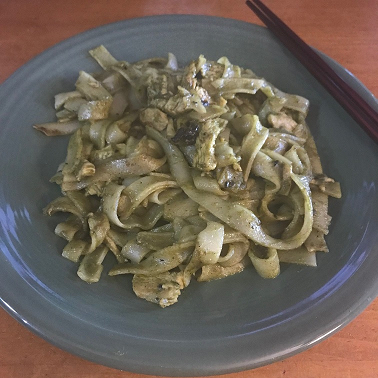Classic Cold Soba makes a great summer dinner as the noodles are served room temperature or even cold. We like to serve the noodles with sliced leftover roast pork, such as leftover Spiced Pork Tenderloin with Maple Chipotle Sauce. Steamed Edamame makes a nice accompaniment as well. To find the soba noodles, the dashi kombu and the bonito flakes that the recipe requires, you will probably have to venture to an Asian grocery. Once you have them though, they last a long time. We now buy these ingredients in fairly large quantities and always have them on hand. For convenience, I am reproducing the recipe we use here. However, this information has been gleaned from two different sources and combined into one. The first source is norecipes.com and the second is seriouseats.com. I quickly tired of paging through multiple page documents every time I wanted to make this, and so here is a more user-friendly version.
Ingredients
For the Dashi:
2 C cold water
6 g dashi kombu (a kind of flat seaweed)
15 g bonito flakes
For the Dipping Sauce:
1 1/2 C prepared Dashi
1/2 C Soy Sauce
1/2 C Mirin
1/4 tsp granulated sugar
For the Noodles:
1 package soba noodles
Large pot of water, salted liberally
Directions
In a small saucepan, combine the cold water and the dashi kombu. On medium heat, bring to a near boil. Remove the dashi kombu. Take off the heat, and add in the bonito flakes. Steep for two minutes. Strain in a strainer lined with a coffee liner or a paper towel.
Measure the dashi to 1 1/2 cups. Rinse out the saucepan and return the dashi to the saucepan. Add the soy sauce, mirin and granulated sugar. On medium heat, bring to a gentle boil. Remove from the heat and set aside to cool.
Bring the large pot of liberally salted water to a rolling boil. Add the soba noodles, stir once, and boil for 5 minutes. Noodles should be tender when done. Remove from the boiling water and put straight into cold water until ready to serve.
Serve noodles with individual bowls of dipping sauce.
Leftover noodles and sauce will keep a few days in the refrigerator, but you should store them in separate containers.

